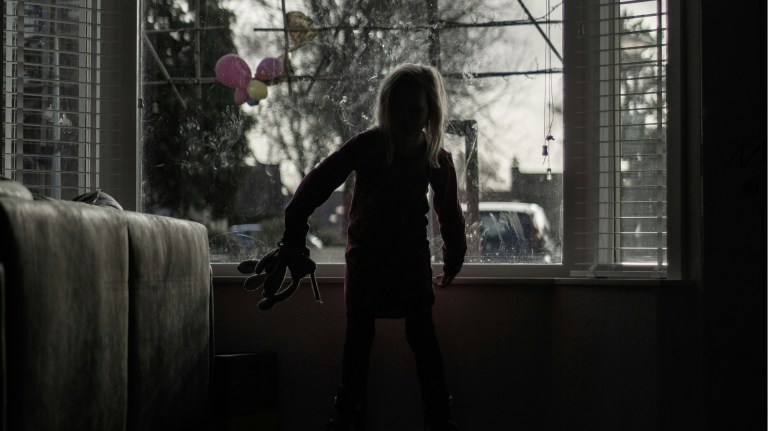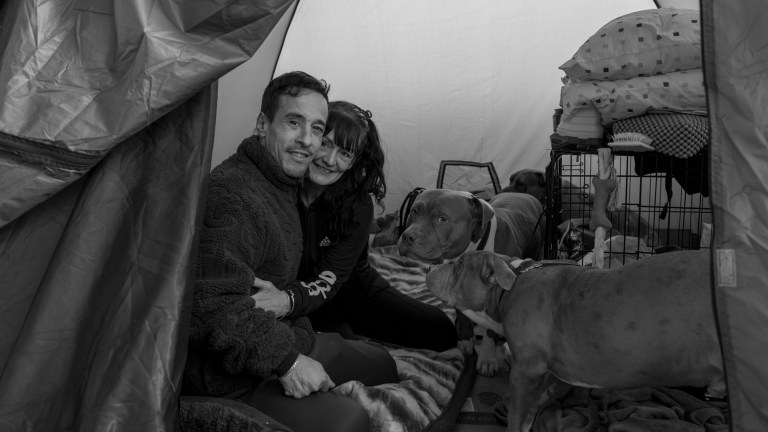Mitchell says it was worth it to know Iain had some control over his death. “Every few days, he would come and say: ‘Can I have a wee chat, Sean?’ And he would start to reminisce about his childhood: the time he spent in care and the jobs he did when he was younger.
“It was like he was looking back over his life to get some kind of closure. And at the end of every conversation he would say: ‘You will let me stay here, won’t you? I won’t be put out’.”
In the end, Iain did have to be taken to hospital, but, after treatment, he was discharged to the hostel and died there on Valentine’s Day last year. Staff and residents attended his funeral where, at his request, Amy Winehouse’s Rehab was played.
For a homeless person to be able to die, like Iain, in the place of their choice with medical support on hand is still rare. The number of people dying on the street or in temporary accommodation has doubled in the past five years, The Guardian found. Some of those deaths will have been caused by overdoses, but others will have succumbed to terminal conditions for which they ought to have been receiving treatment.
In the last few years, the Care Quality Commission has published two reports exploring the barriers to end-of-life care for homeless people. Those reports draw on research carried out by the charity Pathway in collaboration with St Mungo’s, Marie Curie, University College London and Coordinate My Care.
Having interviewed 127 people who had been homeless or worked with homeless people, Pathway identified some of the factors that limit their access. Chaotic lives and a reluctance to engage with services mean there are fewer opportunities to diagnose illnesses; and, even if they are identified, it is more difficult to give an accurate prognosis for conditions like
cirrhosis of the liver than it is for cancer.
Advertising helps fund Big Issue’s mission to end poverty
Then there is the issue of where homeless people should be cared for: hospices may not be an appropriate setting, especially for those addicted to alcohol or drugs, while hospice staff often have trouble balancing the needs of patients with chaotic lifestyles with those of others who crave tranquillity.
He had a good death which is what we were trying to achieve
At the moment what tends to happen is that a terminally ill homeless person might be found unconscious, taken to hospital, treated and then discharged. With no long-term plan, they get trapped in the revolving door of homelessness; they fall off the radar, do not receive follow-up care and end up back in hospital – or dead.
In the wake of the Care Quality Commission reports, Lib Dem MP Ed Davey introduced his Homelessness (End of Life Care) Bill which was due to have its second reading in the House of Commons last month. At present, local authorities are under no obligation to house those deemed “intentionally homeless”. The Bill would change that for those who are terminally ill.
Across the country there is a growing momentum, with innovative collaborations between homelessness and healthcare services being developed in London, Manchester and Cheshire.
The catalyst for Barringer’s project was caring for a heroin addict with double lung cancer who was sleeping on a sofa at a friend’s house after twice being thrown out of hostels. “No one wanted to engage with him because he was known to be difficult,” she says. “They did engage in the end. He got his own flat and he had a good death which is what we were trying to achieve, but it was the obstacles we encountered along the way that led to this project and which have now been broken down because of it.”
Together with Gail Wilson, St Luke’s deputy director of clinical services, Barringer, who was highly commended in the RCN community nursing awards, devised a four-day training programme for 15 charities including soup-run volunteers and street pastors, who were likely to be in direct contact with rough sleepers.
Advertising helps fund Big Issue’s mission to end poverty
At George House, a regular drop-in clinic was set up to help identify those who were in the last six months of their life. The challenge of storing the drugs necessary for treatment on-site was overcome by installing a safe to which only visiting health professionals had the code.
The next step will be to appoint a care co-ordinator to ensure homeless people don’t slip through the net as they move from one healthcare setting to another.
Mitchell’s last gesture of friendship to Iain was to prevent bailiffs taking the silver cross around his neck to offset the cost of his public funeral
Though initially the 11 shift workers at George House were split over Mitchell’s decision to accommodate Iain’s death, all now support the policy. One of the hostel’s “clusters” has been dedicated to complex needs and end-of-life care.
Since December there have been two more drug deaths there and Mitchell says he is having to administer Naloxone – the antidote for a heroin overdose – once or twice week. As a result, he wants to extend the end-of-life conversations to those who, though not terminally ill, are at raised risk of sudden death. He has also asked that staff be trained to the level of first responders.
Mitchell’s last gesture of friendship to Iain was to prevent bailiffs taking the silver cross around his neck to offset the cost of his public funeral. “That cross was very important to him so I made sure it went in his casket with him,” he says.
Dying at 54 is no one’s idea of a good outcome but, unlike so many homeless people found dead in doorways or under hedges, Iain spent his last days with the people who cared most about him. And that must count for something.
Advertising helps fund Big Issue’s mission to end poverty
*A pseudonym









